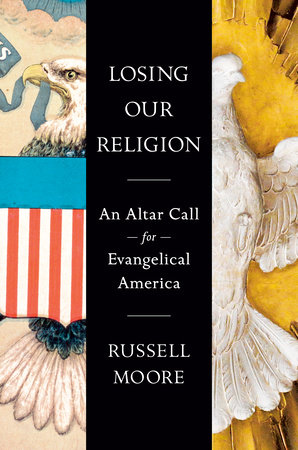The gender wars are tricky enough with men and women. Imagine negotiating sexual politics with Muppets.
The New York Times reports this morning that the makers of children’s television pioneer Sesame Street is adding a new addition to its lineup of characters: a girl who is, well, girly. The new character, Abby Cadabby, is a pink fairy with pigtails, wide eyes, and a pastel dress. Sesame Street has had female characters before, most prominently the zany Zoe. But this character is different in that she’s so distinctly feminine. So why did it take Sesame Street 37 years to introduce what producers describe as a “girly girl”?
As it turns out, portraying femininity these days is politically perilous.
The closest thing to a female lead character in the world of Jim Henson’s puppet-creatures, the Times notes, appeared not on Sesame Street but on its commercial television companion, The Muppet Show. The character, Miss Piggy, is hardly politically correct. Instead, she is the caricature of a vain, shallow, outrageously bossy woman. No one would accuse Kermit the Frog of patriarchy. As the Times puts it, “You have to go back to ‘Dynasty’ reruns to find a more jealous, vain and domineering female role model on television.”
Besides Miss Piggy, the Times explains, the Muppeteers have concluded that it is easier to portray male characters than female ones, because there are fewer potential social pitfalls. This is especially true on a politically-aware program such as Sesame Street, a show that has tackled inter-racial romance, immigration, environmental protection, and even death with finesse and sensitivity.
“If Cookie Monster was a female character,” says executive producer Carol-Lynn Parente, “she’d be accused of being anorexic or bulimic. There are a lot of things that come attached to female characters.” Another observer told the Times: “It would be hard to have a female character who didn’t also seem ditzy.”
In seeking to avoid any insult to gender equality, Sesame Street has just erred on the side of testosterone (Does Elmo have testosterone? Never mind). This comes at a cost. Liz Nealon, creative director of the program says: “Political correctness hampers creativity.”
So should feminists worry that the nation’s children will now see a more stereotypical girl Muppet? Should Christians rejoice that the Children’s Television Network has found the Proverbs 31 woman? The answer to both questions is no.
Political correctness does hamper creativity. That’s especially true in a world like ours where it is considered “hate speech” to suggest that women are designed to be more nurturing and men are designed more to protect and to provide. When Sesame Street recognizes that it is excluding the feminine in an attempt to be more politically sensitive, that’s at least a recognition that the egalitarian ideal of an androgynous society isn’t all it’s cracked up to be.
Even so, the definition of femininity here is far from a biblical one. Do pink pigtails really make one feminine? It turns out the motive behind Sesame Street’s turn to the feminine side has everything to do with marketing: they wanted an Elmo to sell to girls and, as one Sesame Street marketer put it, pink coloring makes Abby perfect for merchandising around Valentine’s Day and Christmas.
The Sesame Street creative process here reflects perfectly the assumptions of the culture about what it means to be a woman. Girls are raised to be hard-charging success-mongers who also are pretty, sexy, flirtatious, and endlessly marketable. That’s why little girls are given “Warrior Princess” action figures, navel-baring midriffs, and pink, frilly “Daddy’s Little Princess” blouses. But isn’t there something to being a woman besides the alternatives of being a mannish female or a vacuous play-pretty? Are our choices limited to Janet Reno or Paris Hilton, Miss Piggy or Malibu Barbie?
The Holy Scriptures show us a more excellent way. The apostle Peter commends our foremother Sarah, hardly an airhead pushover. Peter confronts, as does Paul (1 Tim 2:9-11), the ancient temptation to equate feminity with girly attire: “the braiding of hair, the wearing of gold, or the putting on of clothing” (1 Pet 3:3). Instead, he commends the cultivation in women of “the hidden person of the heart with the imperishable beauty of a gentle and quiet spirit, which in God’s sight is very precious” (1 Pet 3:4 ESV).
In the end, it shouldn’t matter what television marketers tell us is feminine or “girly.” Our daughters should see femininity not in a toy package or in a blue glowing screen but in the older, godly women of our churches (Titus 2). Still, we should listen to the producers’ conversation. They want to sell a product to a demographic group, and they’re telling us that group wants to know what it means to be a girl.
Somewhere in America some little girl is looking to Dora the Explorer plush toys and Little Mermaid DVDs, looking to find a hint as to what it means to be feminine. Let’s pray for churches that love her enough to show her the glory of womanhood, a glory that neither the equality-hawkers nor the perfume magnates of this age can ever understand. Let’s raise up a generation of daughters of Sarah that know what it means to be beautiful and successful, a beauty and a success that is measured by the Spirit rather than by Cosmopolitan magazine or the Feminist Majority Campaign.
It will take more than consumer cuteness and pastel colors to tap into true femininity, although it might sell some products. For now, the Proverbs 31 woman passes by, singing to herself: “Can you tell me how to get, how to get to Sesame Street?”






